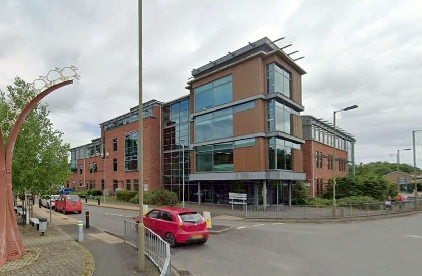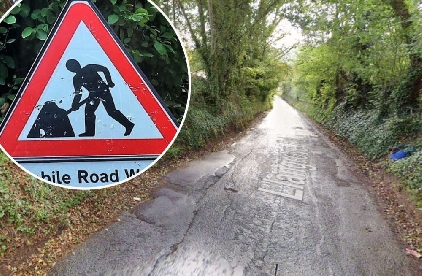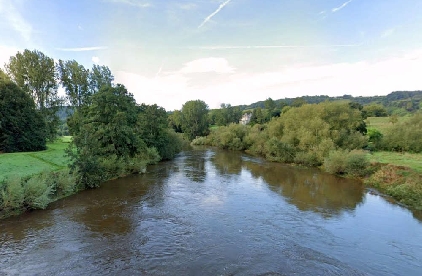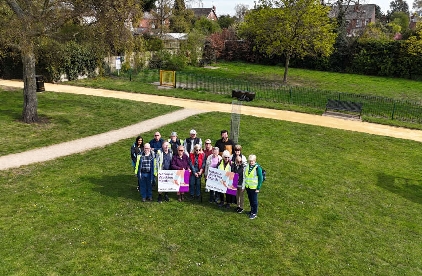
A North Herefordshire farm’s bid to permit an open lagoon for dilute anaerobic digestate has provoked alarm over the environmental harm this could cause.
Bowley Court Farm, Hope under Dinmore near Leominster, is seeking retrospective permission to change a reservoir, nearly a hectare in size and for which permission was granted in 2017, into a storage lagoon for digestate and abstracted water.
This would store the output of an anaerobic digester (AD) plant on the farm, fed year-round by grass, crops, reject potatoes, manure and animal slurry.
An agent’s letter with the application says the change “will help protect the Lugg and Wye rivers from phosphate pollution”, as it “allows excess anaerobic digestate to be stored until conditions are suitable for spreading on fields”.
The “nutrient-rich” digestate cannot be spread on fields between the start of October and end of January for environmental reasons, it explains.
The farm’s AD plant “produces clean renewable heat and electricity from wastes and biomass”, with the electricity powering potato refrigeration and grain drying on the farm , the rest being exported to the local grid.
There are already closed tanks also in use for digestate storage on the farm, the letter adds.
The farm “was unaware that using the lagoon for digestate and water storage, rather than solely for water storage, would require planning consent”, it explains.
“For this reason, no application was made to the planning authority prior to the commencement of the storage of digestate in winter 2021.”
But Herefordshire Council’s ecology officer has opposed granting the permission, saying that such a use “would normally require a permit from the Environment Agency, no details of which have been supplied”, and calling for the agency to be formally consulted on the bid.
A bid for such a licence “would not normally be considered within 500m of a national nature conservation site”, the officer said.
Yet the uncovered lagoon lies 400m from the River Lugg site of special scientific interest (SSSI), and also within 300m of “sensitive, irreplaceable ecological habitats” including ancient woodland, where already air pollution ceilings are already breached.
The council “must complete the HRA (habitat regulation assessment) process, and consider effects on other designated sites and protected species with a demonstrable ‘no adverse effect’ secured, PRIOR to any final grant of a planning permission”, they urged.
The officer also called for “a detailed scheme to ensure that, even if over-topped or if any failure of the lagoon occurs, NO liquid or associated nutrient loading will reach the river Lugg”.
Herefordshire Wildlife Trust senior conservation officer Sarah King said the proposal “doesn’t set out how the level of nutrient in the lagoon, and therefore the level of nutrients being applied to the land, will be monitored”.
Also unmonitored would be the ammonia gas released from the “effluent” in the open lagoon, which would potentially harm the protected sites nearby, and which the application does not address, she added.
David Arrowsmith, a nearby resident who monitors pollution levels in the area’s rivers as part of a citizen science project, said: “Any leakage or spillage will flow downhill towards our rivers and streams.
“It seems totally incongruous that something as large as this could be located where any malfunction of the pit or its associated equipment could result in an ecological disaster and possible irreversible damage to the already fragile infrastructure of the river Lugg and its associated streams.”
Further comments on the application, numbered 223610, can be made until February 28.


 Forest of Dean candidate suggests ‘radical plan’ to annex Ross-on-Wye
Forest of Dean candidate suggests ‘radical plan’ to annex Ross-on-Wye
 Social landlord plans staff cuts
Social landlord plans staff cuts
 Lake View Nursery to receive a special award for supporting children's health
Lake View Nursery to receive a special award for supporting children's health
 Herefordshire Council reveals six more roadworks closures
Herefordshire Council reveals six more roadworks closures
 County’s top spots for sewage spills named
County’s top spots for sewage spills named
 Herefordshire primary school places announced
Herefordshire primary school places announced
 Get ready to walk this May and enjoy the 'Walk This May Challenge'
Get ready to walk this May and enjoy the 'Walk This May Challenge'
 New EV charging points planned for Hereford, Leominster and Kington
New EV charging points planned for Hereford, Leominster and Kington

